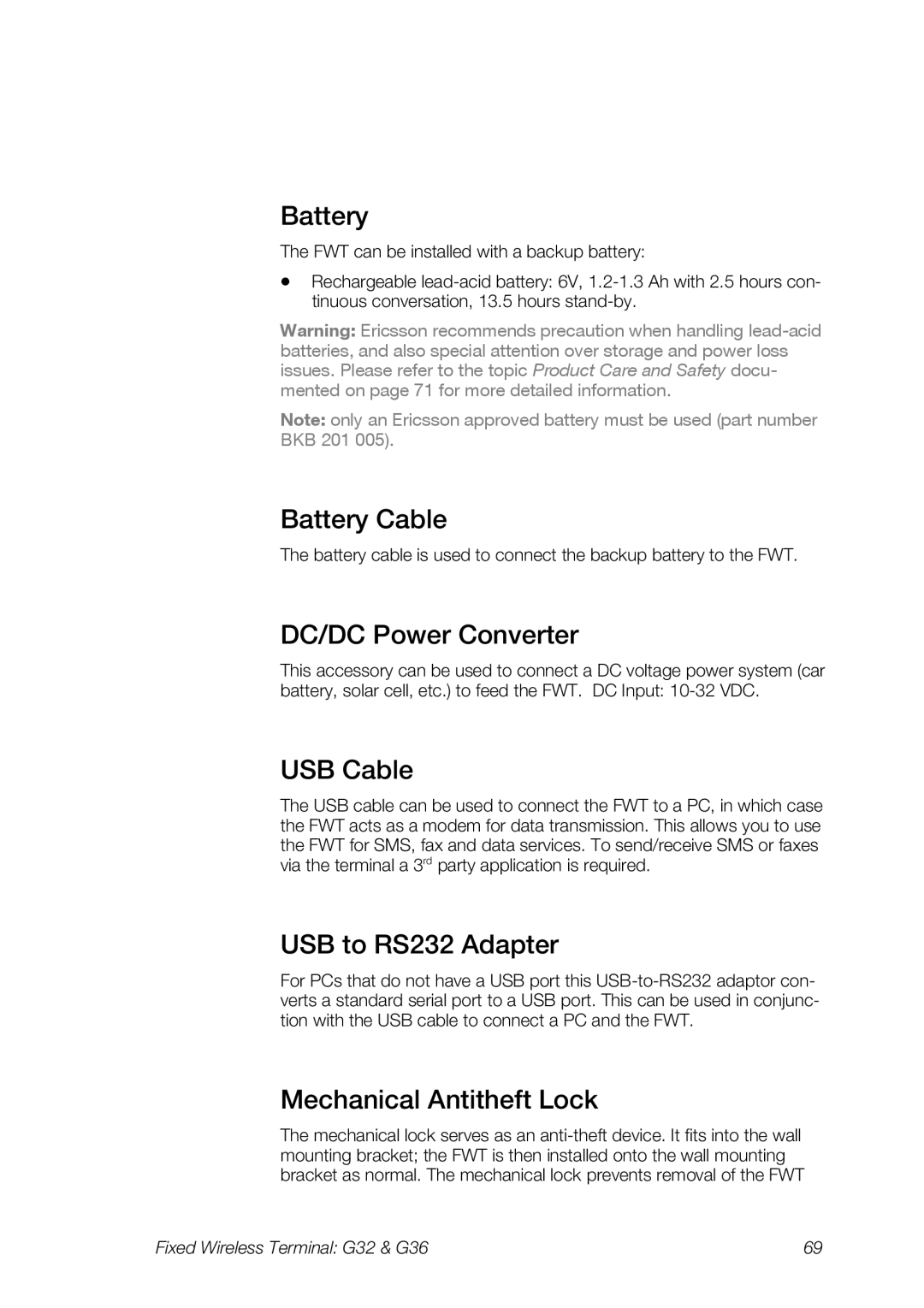G32, G36 specifications
Ericsson has long been a leader in the telecommunications industry, providing innovative solutions that cater to the evolving needs of network operators around the globe. Among its impressive lineup, the Ericsson G36 and G32 models stand out as remarkable technologies, designed to enhance connectivity, efficiency, and performance in various environments.The Ericsson G36 is positioned as a high-capacity macro radio, specifically engineered for dense urban areas and environments with significant traffic demands. One of the main features of the G36 is its advanced Massive MIMO (Multiple Input Multiple Output) technology. This allows the system to support multiple data streams simultaneously, improving overall throughput and network reliability. By maximizing spectral efficiency, Massive MIMO boosts capacity without requiring additional spectrum resources, which is a critical advantage in today’s data-driven landscape.
The G36 is also equipped with dynamic beamforming capabilities. This technology enhances signal quality by directing beams towards users, reducing interference, and improving coverage. With its ability to adapt to changing traffic patterns, the G36 ensures that users experience seamless connectivity, even during peak times. Supporting both 4G LTE and 5G NR, the G36 is a future-ready solution that allows operators to transition smoothly to next-generation networks.
On the other hand, the Ericsson G32 offers a more compact solution without compromising on performance. Designed for rural areas or small cell deployments, the G32 integrates advanced features in a smaller footprint. It is optimized for indoor and outdoor applications, making it versatile and suitable for a range of deployment scenarios. The G32 supports Ericsson's latest software and network functions, allowing operators to leverage features like network slicing and enhanced edge computing capabilities.
Another notable characteristic of the G32 is its energy efficiency. Built with sustainability in mind, this model minimizes power consumption while maintaining effective performance levels, aligning with industry goals for greener network solutions. This technology not only helps in reducing operational costs but also contributes to the overall reduction of carbon footprints.
Both the Ericsson G36 and G32 showcase the company's commitment to innovation, providing robust solutions that enable operators to meet the demands of modern telecommunications. With their advanced features, energy-efficient designs, and adaptability to various deployment scenarios, these models are set to play crucial roles in the evolution of connectivity worldwide.
